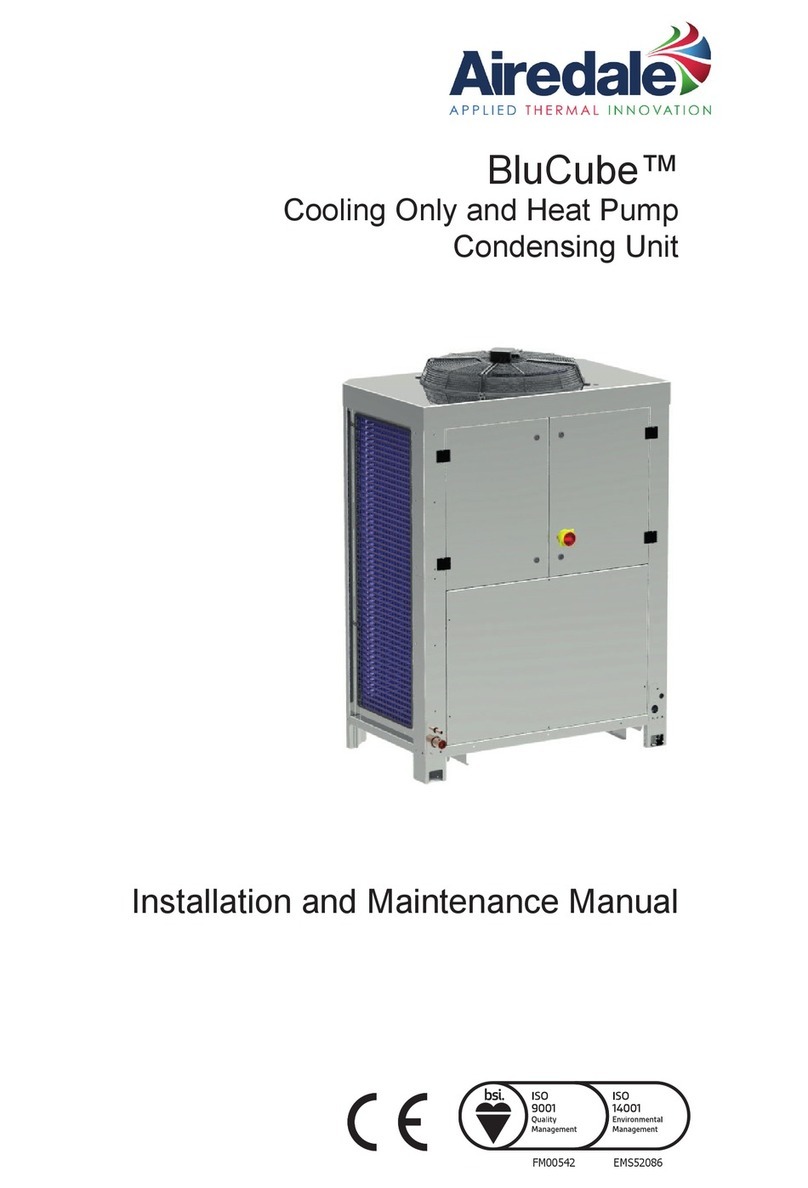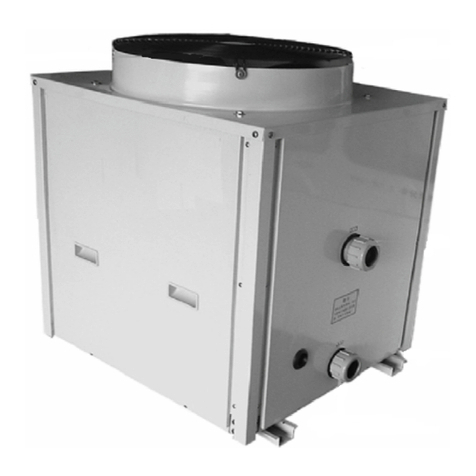
• Installation, operation, maintenance and repair work must only be performed by authorised,
trained, specialised personnel.
• Before carrying out any maintenance, repair work, adjustment or any other non-routine checks,
stop the device. In addition, the power isolating switch must be opened and locked.
1.3 Safety precautions during installation
• The use of personal protection equipment (P.P.E.) during installation and maintenance
operations is recommended.
• Install the equipment where the ambient air is cool and as clean as possible. Consult section
Reference conditions and limitations.
• During installation or any other intervention on the equipment or one of the connected
machines, the machines must be stopped, de-energized and the isolating switch opened and
locked before any maintenance or repair. As a further safeguard, persons switching on remotely
controlled machines shall take adequate precautions to ensure that there is no one checking or
working on the machine. To this end, a suitable notice shall be affixed to the start equipment.
• Install the equipment in an area free of flammable fumes, vapours and particles, e.g. paint
solvents, that can lead to internal fire or explosion.
• The electrical connections must correspond to the applicable codes. The equipment must be
earthed and protected against short circuits by fuses in all phases. A lockable power isolating
switch must be installed near the equipment.
• For machines controlled by a central control system, a sign stating "This machine may start
without warning" must be affixed near the instrument panel.
• In multiple compressor systems, manual valves must be installed to isolate each compressor.
Non-return valves (check valves) must not be relied upon for isolating pressure systems.
• Never remove or tamper with the safety devices.
• If the maximum pressure of the compressor is higher than the design pressure of the connected
equipment (e.g. a nitrogen generator or an oxygen generator), a full flow safety valve must be
installed between the compressor and the connected equipment, in order to be able to blow off
the excessive pressure.
• Only use pressure-proof installation material. The feed line must be firmly fixed. The discharge
line should be a short pressure hose or a pressure-proof pipe. Ensure that the condensate
cannot squirt onto persons or objects.
• Avoid excessive tightening of the connectors on the inlet and outlet. When tightening the
connectors, two keys have to be used: one to hold the valve, the other to tighten the nut.
• In areas where freezing temperatures are expected, the device should be provided with
thermostatically controlled heating (optional equipment).
• During electric installation, all regulations in force need to be adhered to (e.g. VDE 0100 / IEC
60364).
Note: Also consult following safety precautions: Safety precautions during operation and
Safety precautions during maintenance or repair.
Note: The precautions apply to electrical devices.
Note: For precautions applying to the connected equipment, consult the relevant instruction
book.
Note: Some precautions are general and cover several machine types and equipment;
hence some statements may not apply to your device.
Instruction book
2920 7213 30 5



























